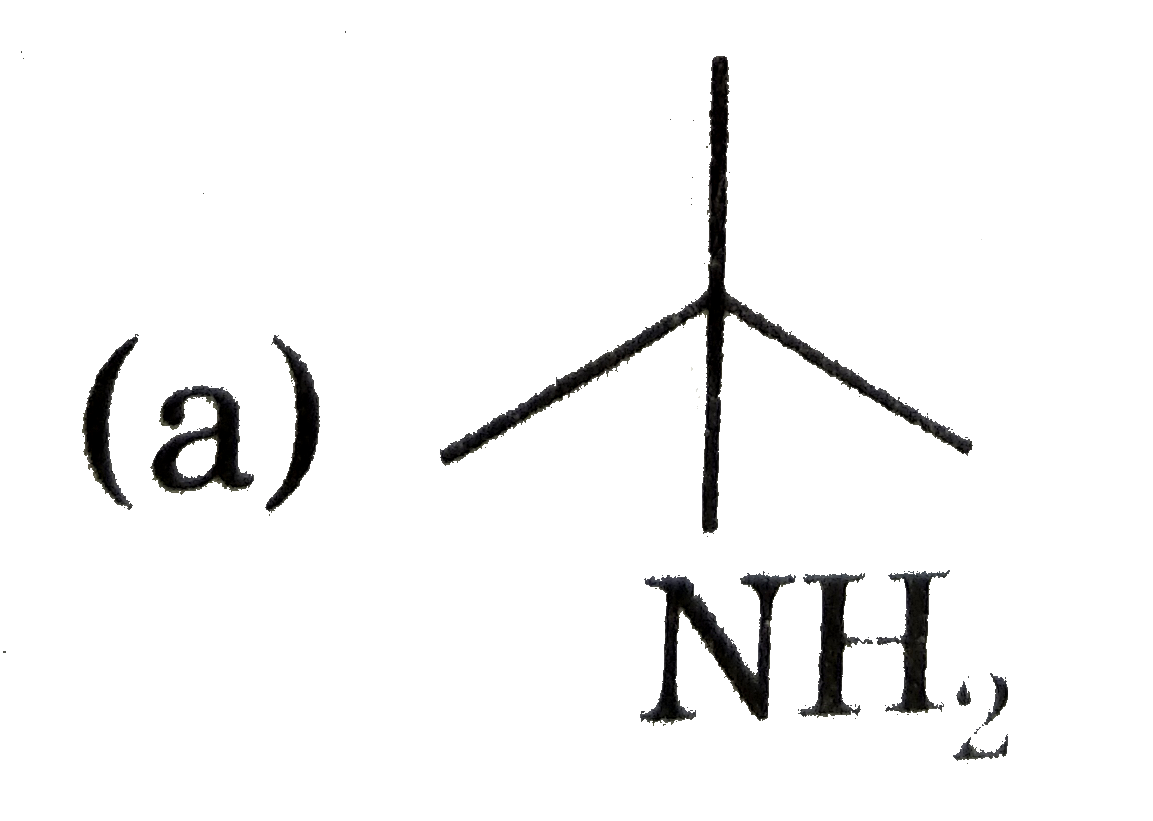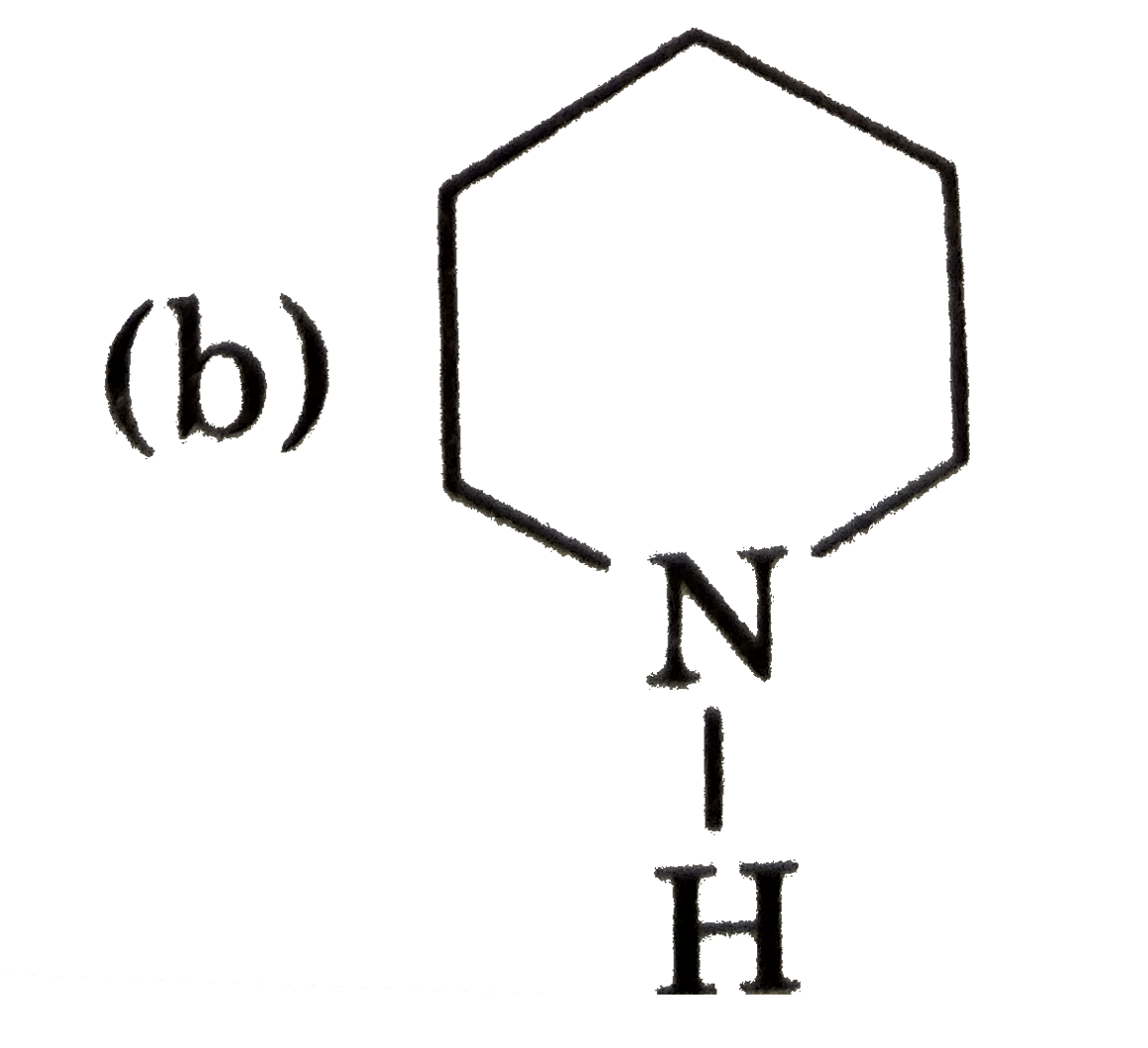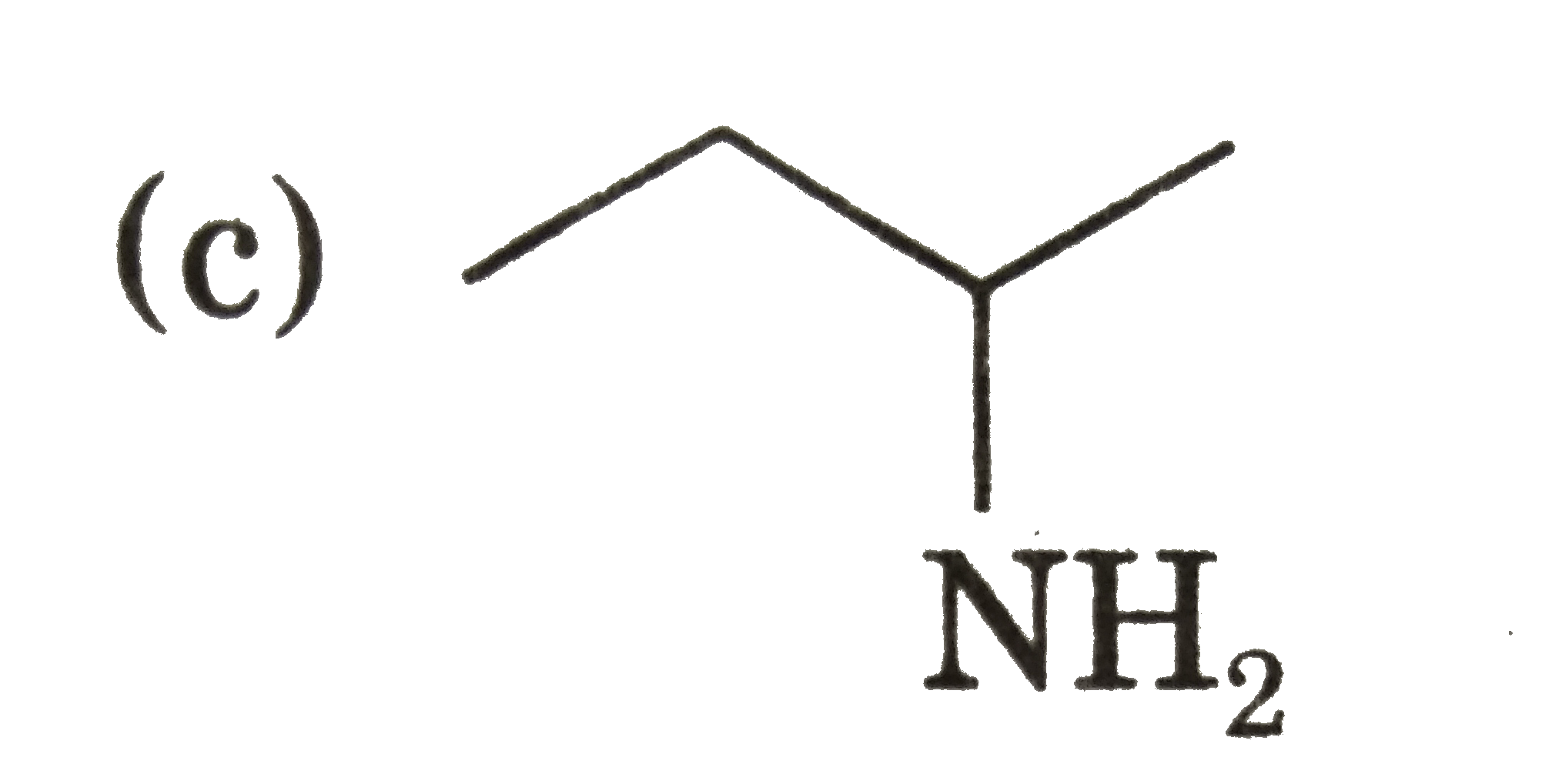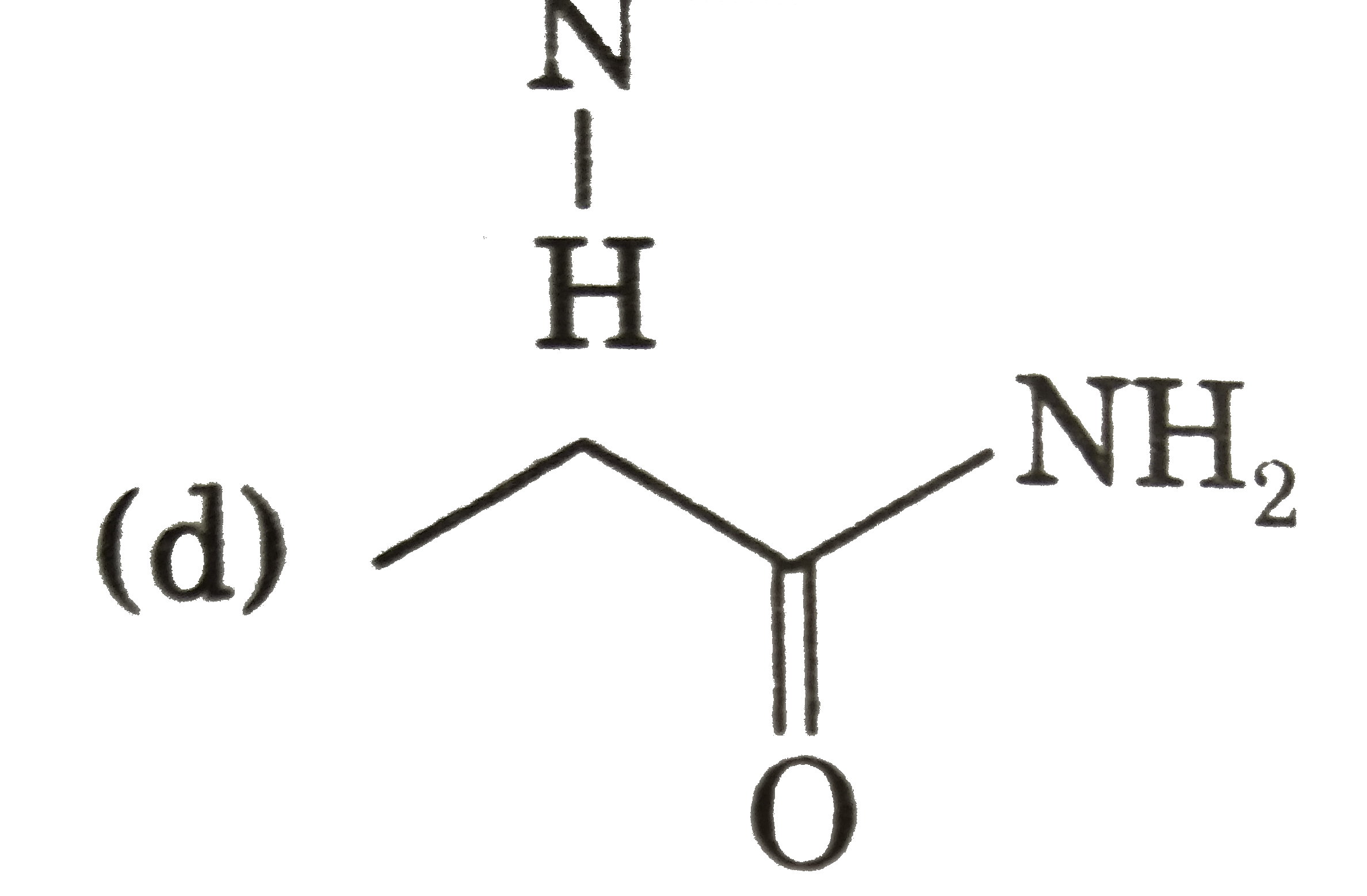Explore topic-wise InterviewSolutions in .
This section includes InterviewSolutions, each offering curated multiple-choice questions to sharpen your knowledge and support exam preparation. Choose a topic below to get started.
| 15351. |
What happens when concentrated sulphuric acid is added to formic acid ? Give equation. |
|
Answer» Solution :When sulphuric acid is added to FORMIC acid, it FORMS carbon monoxide and WATER. `HCOOH OVERSET (H_2SO_4)rarr CO + H_2O` |
|
| 15352. |
The species with an atom in +6 oxidation state is |
|
Answer» `MnO_(4)^(-)` |
|
| 15353. |
Which of the following metal exhibits photoelectric effect readily? |
|
Answer» Cs |
|
| 15354. |
While writing the formula of ferrous oxide it is written as (FeO), because it is |
|
Answer» Non-stoichiometric |
|
| 15356. |
Which of the following hydrogen halides has the lowest boiling point? |
|
Answer» HCl |
|
| 15357. |
Which one of the following is not used as a filler in laundry soaps? |
|
Answer» SODIUM SILICATE |
|
| 15358. |
Use the data in Q.8 and find out which of the following is the strongestoxidising agent. |
|
Answer» `Cl^(-)` |
|
| 15359. |
When metal 'M' is treated with NaoH, a white gelatinous precipitate 'X' is obtained, which is soluble in excess of NaOH. Compound 'X' when heated strongly gives an oxide which is used in chromatography as an adsorbent. The metal 'M' is |
|
Answer» Ca 
|
|
| 15360. |
Explain what happens when HCl gas is passed through concentrated NaCl solution? |
|
Answer» Solution :NACL is precipitated from its solution `NaCl rarr NA^++ Cl^-` `HCL rarr H^++Cl^-` |
|
| 15361. |
Write the chemical equation for preparing sodium soap from glyceryl oleate and glyceryl palmitate. Structural formulae of these compounds are given below : (i) (C_(15)H_(31)COO)_(3)C_(3)H_(5) - Glyceryl palmitate. (ii) (C_(17)H_(32)COO)_(3)C_(3)H_(5) - Glyceryl oleate. |
Answer» SOLUTION :
|
|
| 15362. |
Which complex is used as an antiumor drug in cancer treatment ? |
|
Answer» `CA`-EDTA chelate |
|
| 15363. |
Which among the following species have sp^(2) hybrid N-atom ? |
|
Answer» Nitrobenzene  `CH_(3)CH = NOH` are `SP^(2)` hybridised |
|
| 15364. |
Which of the following has highest knocking property |
|
Answer» OLEFINS |
|
| 15365. |
Which one of the following is an example of a hydrophilic colloidal sol? |
|
Answer» RUBBER in water |
|
| 15366. |
The vapour pressure of acetone at 20^(@)C is 185 torr. When 1.2 g of a non-volatile substance was dissolved in 100 g of acetone at 20^(@)C, its vapour pressure was 183 torr. The molar mass (g mol-') of the substance is : |
|
Answer» 128 `(p^(@) -p_(s))/(p _(s))=(w_(2) M_(1))/(w_(1)M_(2))` `w_(2), M_(2)=` mas in g and MOL MASS of solvcnt `w_(2), M _(2)=` mass in g and mol. Mass of solutc Let `M_(2) =x` `p^(@)=185` torr `p _(s) =183 ` torr `(185-183)/(183)=(1.2xx58)/(100x)` (mol. mass of acctone = 58)` `x= 64` `THEREFORE ` Molar mass of SUBSTANCE = 64 |
|
| 15367. |
Which is the IUPAC name of{:(""C_(2)H_(5)),("|"),(CH_(3)-C-CH_(2)Cl),("|"),(""C_(2)H_(5)):} |
|
Answer» 1-chloro-2, 2-diethylpropane |
|
| 15368. |
Which of the following type of cubic lattice hasmaximum number of atoms per unit cell ? |
|
Answer» Simple CUBIC |
|
| 15369. |
Which of the following compounds will give isocyanide test with CHCL_(3)//KOH ? |
|
Answer»
|
|
| 15370. |
Which of the following compounds has the greater dipole moment? |
|
Answer» |
|
| 15371. |
When atoms are placed at the corners of all 12 edges of a cube in a unit cell, how many atoms are present per unit cell? Also name this unit cell. |
| Answer» SOLUTION :8 COMERS only. So `8 xx 1/8` =1 UNIT CELL is PRIMITIVE unit cell. | |
| 15372. |
What is the reaction quotient , Q for the cell Ni_((s)) | Ni^(2+) (0.190 M) || Cl^(-) (0.40 M) | Pt_((s)) Cl_(2(g)) (1.0 atm) |
|
Answer» `3.1 xx 10^(-1) ` |
|
| 15373. |
The simultaneous solubility of AgCN (K_(sp)=2.5xx10^(-6))and AgCl (K_(sp)=1.6xx10^(-10)) in "1 M NH"_(3)(aq) are respectively Given K_(f)[Ag(NH_(3))_(2)]^(+)=10^(7) |
|
Answer» `1.58xx10^(-3), 1.26xx10^(-5)` |
|
| 15374. |
Which does not contribute significantly to acid rains ? |
| Answer» ANSWER :A | |
| 15375. |
Which of the following sols can only be prepared by boiling the dispersed phase with dispersion medium? |
|
Answer» EGG ALBUMIN sol in water |
|
| 15376. |
Which of the following species is more soluble in water ? |
|
Answer» `M(OH)_3 : K_sp=10^(-35)` |
|
| 15377. |
The root mean square speeds at STP for the gasesH_(2),N_(2), O_(2) and HBr are in the order : |
|
Answer» `H_(2)ltN_(2)ltO_(2)ltHBr` or `u=sqrt(3PV//M)` at STP u `alphasqrt(1/M)` i.e., HIGHER will be the molar MASS lower will be the value of `u_(RMS)`. Molecular masses of `H_(2), N_(2), O_(2)` and HBR are 2,28,32 and 81. Hence the correct order is `HBr lt O_(2) lt N_(2) lt H_(2)`. |
|
| 15378. |
The standard reduction potential for Fe^(2+)//Fe and Sn^(2+)//Sn electrode are -0.44 and -0.14 volt respectively. For the givencell reaction Fe^(2+)+SntoFe+Sn^(2+), the standard EMF is:- |
|
Answer» `+0.30V` `E_(cell)^(o)=E_(cathode)^(o)-E_("anode")^(o)=-0.44-(-0.14)=-0.30V` the NEGATIVE EMF suggests that the reaction goes spontaneously in reverse DIRECTION. |
|
| 15379. |
Which of the following is the chemical name of Vitamin B_12 ? |
|
Answer» FOLIC ACID |
|
| 15381. |
The specific rate constant of a reaction depends on the |
|
Answer» CONCENTRATION of the reactant |
|
| 15382. |
Which adsorption takes place by strong chemical bond ? |
|
Answer» physisorption |
|
| 15383. |
The standard reduction potentials of Fe^(3+)//Fe " and "Fe^(2+)//Fe electrode system are -0.035 V and -0.44 V respectively. Predict which of the two oxidations is easy. Fe^(3+)//Fe " and " Fe^(2+)//Fe. |
|
Answer» Solution :(i) The ION which has lower reduction potential will be oxidised first at the anode. (II) AMONG (0.035V) and (0.44V), `Fe^(2+)//Fe` oxidation is easy because it has the lower reduction potential (-0.44V). |
|
| 15384. |
Which of the following IUPAC name is correct ? |
|
Answer» 2-methyl-3-ethylpentane |
|
| 15385. |
To find molelular mass of diabasic acid by silver salt method following graph is plotted then approximate molecular weight of acid is - where y = weight of silver residue ( in gm) x = weight of silver salt (in gm) |
|
Answer» 160 gm `(W_("salt"))/(W_(Ag)) = sqrt3` `M_(WT) "of" H_(2)X = 2 (108 (W_("Salt"))/(W_(Ag )) - 107)` `= 2 (108 XX sqrt3 - 107)` `= 2 (187.056 - 107)` `= 2 xx 80.056` `= 160.112 gm` |
|
| 15386. |
Which compound in each of the following pairs will react faster in S_(N)2 reactionwith ""^(Θ)OH ?(i) CH_(3)Br or CH_(3)I(ii) (CH_(3))_(3)C Cl or CH_(3)Cl |
Answer» Solution :(i) Due to large size of iodine, the C - I bond is a WEAK bond as compared to C - Br. Also, `I^(-)` is a better leaving group. So, `CH_(3) - I` will react with `""^(Θ)OH` via `S_(N)2` than `CH_(3)-Br`. (ii) In `S_(N)2` reaction, the nucleophile attacks from the opposite side of the leaving group. The attack is favoured if there is presence of small groups i.e., minimum steric HINDRANCE. Thus, `CH_(3)Cl` will react faster via `S_(N)2`. 
|
|
| 15387. |
When H_(2)S gas is passed through the HCl containing aqueous solutions of CuCl_(2),HgCl_(2),BiCl_(3) and CoCl_(2), which does not precipiate out |
|
Answer» `CuS` |
|
| 15388. |
When acetylene is passed through dil .H_2SO_4 in the presence of HgSo_4 the compound formed is : |
| Answer» Answer :D | |
| 15389. |
Write the correct formulae for the following coordination compounds : (i) CrCl_(3).6 H_(2)O (violet with 3 chloride ions precipitated as AgCl) (ii) CrCl_(3).6H_(2)O (light green colour with 2 chloride ions precipitated as AgCl) (iii) CrCl_(3).6H_(2)O (dark green colour with 1 chloride ion precipitated as AgCl). |
|
Answer» SOLUTION :Remembering that coordination of Cr is 6, we have (i) `[Cr(H_(2)O)_(6)]Cl_(3)` (ii) `[Cr(H_(2)O)_(5)Cl]Cl_(2).H_(2)O` (III) `[Cr(H_(2)O)_(4)Cl_(2)]Cl.(2 H_(2)O)`. |
|
| 15390. |
The type of adsorption depicted by the adsorption isobar |
| Answer» Answer :A | |
| 15391. |
The triad of nuclei that represents isotopes is : |
|
Answer» `""_(6) C^(14) , ""_(7)N^(14) , ""_(9)F^(19)` |
|
| 15392. |
Which of the folliwng is the correct order of the order of the rate of reaction of C_(6)H_(6), C_(6)D_(6) and C_(6) T_(6) towards nitration? |
|
Answer» `C_(6) H_(6) gt C_(6) D_(6) gt C_(6) T_(6)` |
|
| 15393. |
What mass of isobutylene is obtained from 37 g of tertiary butyl alcohol by heating with 20% H_(2)SO_(4) at 363 K if the yield of the reaction is 65%? |
|
Answer» 12.8 g 74 g of t-BUOH give isobutylene = 56 g `:.` 37 g of t-BuOH will give isobutylene = `(56)/(74) xx 37 = 28 g` But the yield of the reaction = 65% `:.` Wt. of isobutylene ACTUALLY formed = `(28 xx 65)/(100)= 18.2g` |
|
| 15394. |
Water is more acidic than alcohol |
|
Answer» |
|
| 15395. |
Which statement is correct for H_3PO_3 and H_3PO_4 ? |
|
Answer» `H_3PO_3` is a monobasic and REDUCING AGENT. |
|
| 15396. |
Which method is used to get very pure germanium used in semiconductor ? |
|
Answer» ELECTROLYSIS |
|
| 15397. |
Which of used for the formation of nylon-6,6 |
|
Answer» SULPHUROUS acid |
|
| 15398. |
Which of the following compound gives ethylmethyl ketone on oxidation? |
|
Answer» Propan-2-ol |
|
| 15399. |
Write the dispersed phase and dispersion medium of paints ? |
|
Answer» SOLUTION :DISPERSED PHASE - Solid. Dispersion Medium - Liquid. |
|











